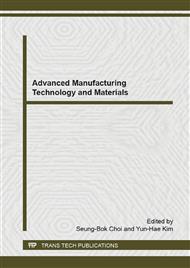p.244
p.248
p.253
p.265
p.270
p.277
p.282
p.286
p.292
The Elastoplastic Finite Element Analysis for the Deep Anti-Sliding Stability of Gravity Dam by the Method of Overloading
Abstract:
Combined with engineering requirements of the Qingyu reservoir, the ANSYS finite element software was used to establish an elastoplastic gravity dam calculation model which considered the mechanical properties of weak structural plane of rock in the dam foundation. An analysis based on not only the finite element iteration not converging,the plastic zones in dam foundation rock developing to through the foundation and the mutation in horizontal displacement of feature points, but also the discontinuous variation of the distribution of horizontal displacement of dam foundation rock, the dislocation between the above and below of weak layers and the leap of iterations were took as the criterions to get the deep anti-sliding stability safety factor of gravity dam by gradually increasing the load burdened on the upstream face of the dam. This thesis illustrated the principle of the elastoplastic finite element analysis for the deep stability of gravity dam by the method of overloading, demonstrated the feasibility of this method ,expanded the criterions to determine the safety factor and obtains the safety factor of this practical engineering under the elastoplastic overloading method.
Info:
Periodical:
Pages:
270-276
Citation:
Online since:
January 2015
Authors:
Keywords:
Price:
Сopyright:
© 2015 Trans Tech Publications Ltd. All Rights Reserved
Share:
Citation:


